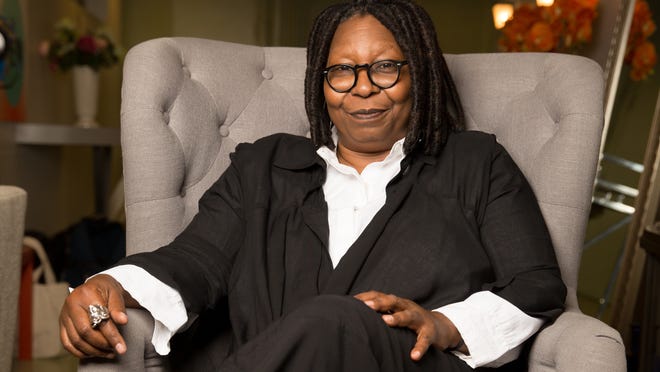I was broke and deeply in debt but was able to reach financial independence by my early 40s
Written by ABC Audio ALL RIGHTS RESERVED on June 3, 2022
Imagine being 21, ready to graduate without a first job lined up, and getting a call that a friend has had an accident — and realizing that this, combined with student loans, just landed you in $40,000 in high-interest debt?
This was my story: I took student loans with interest rates of nearly 7% throughout undergrad, but then decided at age 20 that I’d “help” a friend by cosigning for an open line of credit (who doesn’t need a motorcycle?) at around 18% interest. Well, the call about the accident and finding out he’d be on disability (lucky to be alive) was my wake-up call, and it was one of the main reasons that I became interested in personal finance and early retirement.
The initial jolt right before I graduated made me realize I needed to clean up my mess—and fast. I set about moving home, landing my first salaried job (with a starting salary that was less than my debt), and educating myself on personal finance. I consumed every resource available: blogs by people getting out of debt and slashing their lifestyle expenses, as well as books and radio programs focused on personal finance.
From all of these, I gathered a variety of perspectives, and I found the ideas that resonated most with me. Personal finance is not a one-size-fits-all situation, it’s truly taking in information that makes the most sense for you and your own goals. Flash forward to today, and I’m a CFP and vice president of product in the retirement industry, where my work focuses on expanding access to quality saving opportunities for Americans. I’m personally focused on reaching financial independence by keeping lifestyle costs down, eliminating my debt, and reaching financial independence by my early 40s.
What is FIRE?
The FIRE movement covers two main concepts: financial independence (FI) and retiring early (RE). The most important concept of the movement is financial independence — whether or not you choose to truly retire becomes less important. Typically, people aim to save 50% to 70% (or more) of their income. That may seem extreme, but it doesn’t have to happen all at once.
If you’re in a position to increase your income over time, and you can cut expenses or keep them steady, you can increase your savings ratio without drastic measures. The concept of avoiding lifestyle inflation isn’t a new one, but the math can really work in your favor. Think of it this way: the less your fixed expenses, the less you need saved to cover those expenses — and the more you can save of your total income. Not only is the total savings needed lower, but you’ll get there in an accelerated way. If you save only 10% of your income, it means you’re living on 90% and need to save over a longer time frame to cover those expenses (nine years to collect one year of expenses, ignoring compounding interest and inflation). Alternatively, if you save 50% of your income, you’re living on 50% and save one year of expenses every year. By increasing savings rates, you are actively pulling on both levers.
Read: Think saving half your income is hard? Saving 10% is even worse
Financial independence tiers
One approach when planning to reach FI is to break it into milestones, or tiers. Below are my personal definitions to help me think about FI with a more achievable baseline, and more aspirational levels from there. For reference, I’m using the contentious 4% withdrawal rule, which is debatable for long-term success — but it makes for easy math in the earlier planning stages. I’m aiming for 25 times the annual budgeted amounts for the tiers below and will do a closer check-in before declaring myself FI. I’m also comfortable with this as a benchmark because I don’t intend to truly never work again, but that’s of course different for everyone:
· Tier 1 (Baseline): Just scraping by (groceries — not dining out, housing and utilities, insurances — including non-employer-based medical insurance, clothing, and transit. budget); no recreational spending allotted, but if I never worked again, I’d “be OK”
· Tier 2: Covering today’s monthly actual spend, less exclusive of “fun” (hobby spending, vacation, other luxuries/upgrades) and giving.
· Tier 3: Covering today’s monthly actual spend in full, including vacations, hobbies, and current levels of giving.
· Tier 4: Tier 3 plus desired big-ticket future purchases (e.g., car replacements, home upgrades), lifestyle upgrades if desired, and giving like crazy.
I’ve estimated a three-year path from now to my Tier 1 baseline. In the next three years, I’m aiming to pay off my mortgage in full, save enough cash savings to support 18 months of Tier 1 spending, and reach retirement savings of 25 times budgeted Tier 1 spending. I won’t plan to retire early at that level, but it will give me peace of mind to know that earnings and savings after that level are purely additive lifestyle and giving. I may choose to take time off (an adult gap year, as I like to call it), cut back on work hours and responsibility, or maybe start a new hobby or career altogether.
What I learned
I’ve tried on a lot of versions of strict budgeting, loosening the purse strings while living in NYC, and everything in between. Here are some concepts that have helped me find the path to financial independence.
· Holistic lifestyle considerations: As you might guess, FIRE aligns well with minimalism and driving down consumerism. It’s not saying you’ll never buy another thing, or have another latte out, but it’s being mindful of the way you truly enjoy spending time over what happiness you expect purchases to bring you. Further — consider how social media can drive tendencies to compare and buy into a lifestyle that’s just window dressing.
· Celebrating key moments: Having a minimalist mind-set is a helpful way to avoid spending traps such as gift giving. I’ve never been a fan of defaulting to gifts to celebrate holidays or events. People can get as much joy (or more) from giving and receiving expressions of gratitude and love via written cards or notes, sharing experiences, and offering to cook together. Consider having discussions with family about not giving physical gifts on the holidays by offering a group activity as a different way to spend that time; and for those with extra funds that do want to give, consider funding college savings plans or other accounts for the next generation in your family.
· Plan for retirement: Make the most of your company-sponsored retirement plans, saving directly from your paycheck is the best way to get out of your own way. Use HSAs for longer-term savings (i.e., pay for medical needs today out of pocket, and consider HSAs for tax-favored growth). Maximize your 401(k), especially with employer match. Lastly, research whether pretax or Roth contributions are right for you. Did you know you can ladder your Roth conversions in your early FIRE years to help fund your pre-59½ spending? Read up on these methods…but don’t let research get in the way of just saving: early, and often.
· Stay flexible in approach: I’ve tried a number of ways to budget, track spending, and determine which goals I’m going after. I find that picking one core goal to go after is best to maintain focus, and it’s helpful to pick up small wins along the way. Find tools and apps that help you on your journey and ditch the ones that distract you. Realize that what you think is important today might not match what is important five years down the line and be willing to pivot.
While accumulating so much debt was one of the most difficult things that happened to me, it also ended up being one of the best, as it set me on my pursuit of financial independence. While the FIRE movement may not be for everyone, I believe there are aspects anyone can take and implement into their daily lives. Achieving financial independence is a goal that can be attainable for most with certain lifestyle changes and commitment to making and sticking to a plan.
Amy Ouellette is vice president at Vestwell, a digital 401(k) record-keeper.







